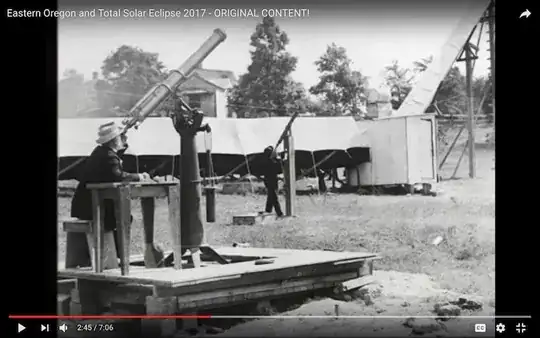This construct was a telescope. Citing this article:
Owing to the difficulty of erecting a double tower, most other astronomers follow the mechanically simpler plan of laying the camera tube horizontally and allowing the sunlight to be fed into it by means of a plane mirror driven by clockwork to counteract the westward motion of the sun.
pg. 255
A Popular Astronomy article also discusses the eclipse observation in detail. They describe the primary telescopes used for photography. The first was a 65-foot telescope (that measurement being the length, not the aperture).
This instrument was in charge of W. A. Conrad, who was assisted by W. L. Veale. The camera was horizontal and was directed toward the sunrise point. Light from the corona was reflected from a silvered glass mirror 10 inches in diameter attached to a coelostat controlled by clockwork. The lens was 7 1/2 inches in aperture and the plates were double coated special coronal, 17x20 inches, made by the Eastman Kodak Co. The diameter of the sun's image on the plates is about 7 1/4 inches. Five exposures were made of 5, 15, 35, 15, and 5 seconds duration respectively.
They also had a 105-inch telescope which was also laid horizontally and had the light directed into it via a coelostat. While I can't be completely sure which telescope is pictured in that image, given the size, my guess would be the 65-foot telescope.
